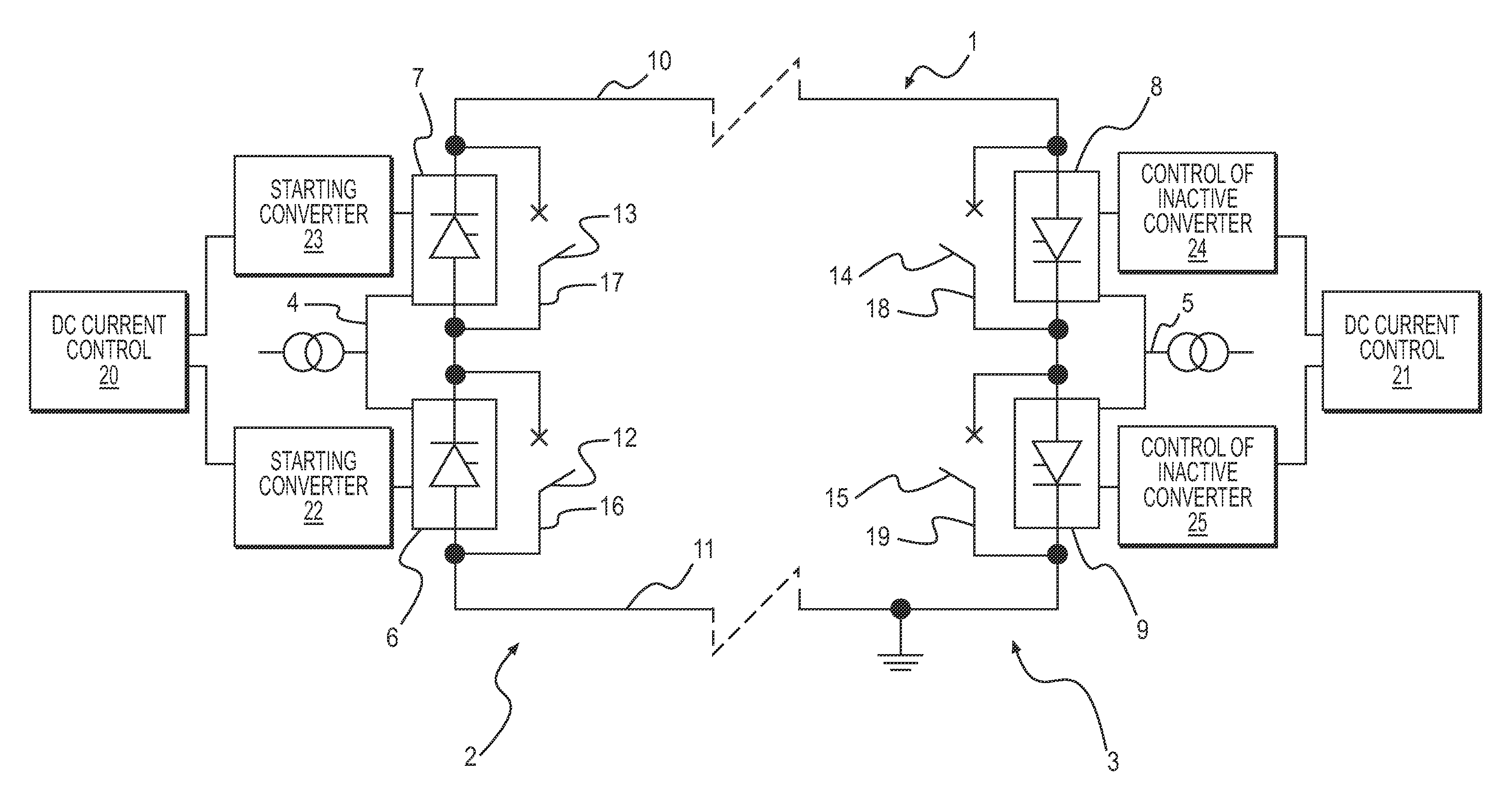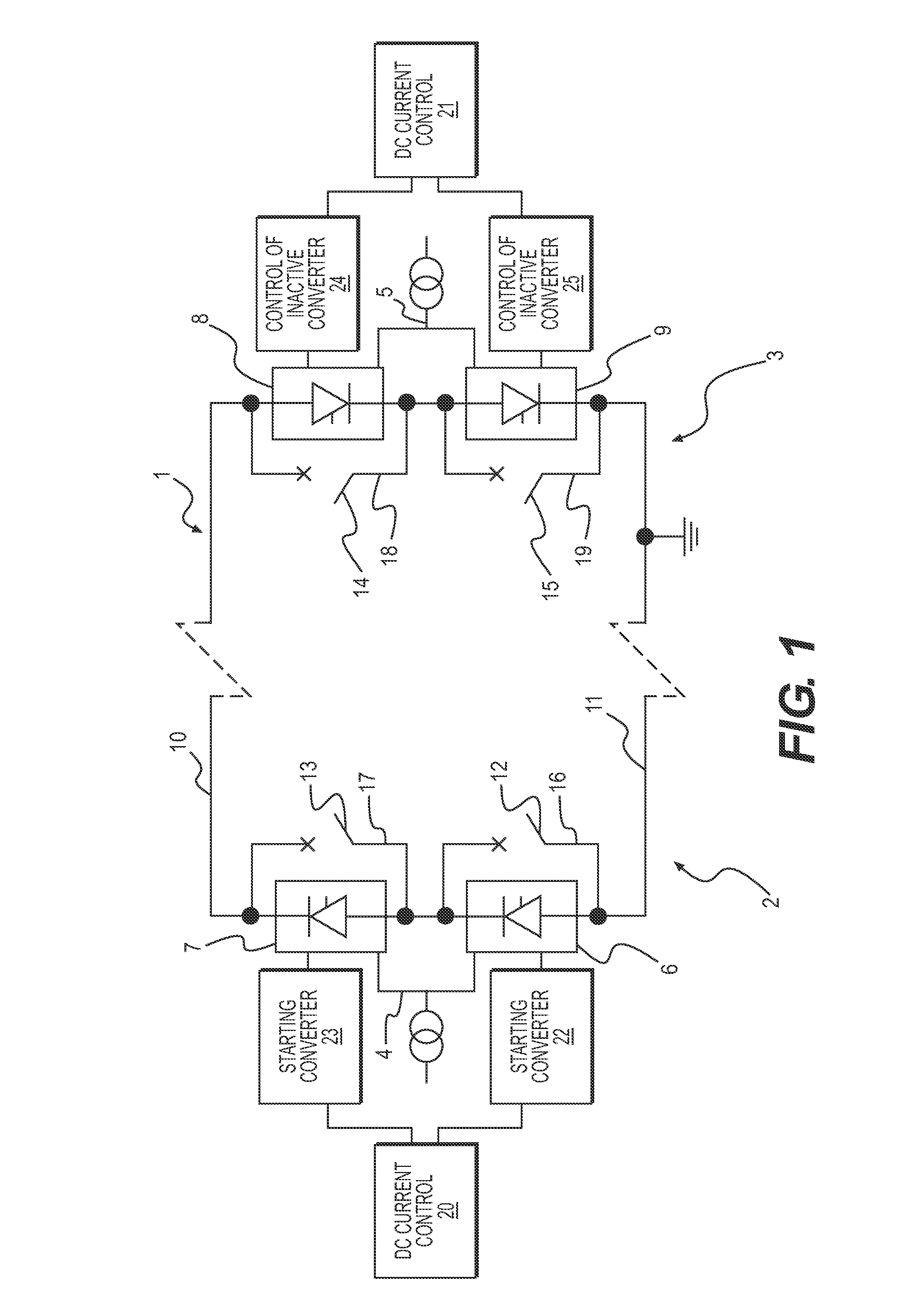Transmission system and a method for control thereof
a transmission system and transmission system technology, applied in the direction of dc-ac conversion without reversal, electric power transfer ac network, emergency protective circuit arrangement, etc., can solve the problems of power transmission through the system falling to zero, large disturbance, severe consequences, etc., and achieve the effect of minimizing disturban
- Summary
- Abstract
- Description
- Claims
- Application Information
AI Technical Summary
Benefits of technology
Problems solved by technology
Method used
Image
Examples
Embodiment Construction
[0024]An HVDC transmission system according to a first embodiment of the invention is shown in FIG. 1. This system has here at each end of a transmission line 1 a converter station 2, 3 for connecting said transmission line to an AC system 4, 5 schematically indicated. The AC system 4 is assumed to be a generating system in the form of any type of power plant with generators of electricity, whereas the AC system 5 is assumed to be a consuming system or network connecting to consumers of electric power, such as industries and communities. Thus, a first converter station 2 is adapted to operate as rectifier and the other, second converter station 3 as inverter. Each station comprises a series connection of two converters 6, 7 and 8, 9 having a DC side thereof connected on one hand to a pole 10 of positive polarity of said transmission line on high potential and on the other to a neutral bus 11 on zero potential by being earthed. Each converter includes a number of converter valves in ...
PUM
 Login to View More
Login to View More Abstract
Description
Claims
Application Information
 Login to View More
Login to View More - R&D
- Intellectual Property
- Life Sciences
- Materials
- Tech Scout
- Unparalleled Data Quality
- Higher Quality Content
- 60% Fewer Hallucinations
Browse by: Latest US Patents, China's latest patents, Technical Efficacy Thesaurus, Application Domain, Technology Topic, Popular Technical Reports.
© 2025 PatSnap. All rights reserved.Legal|Privacy policy|Modern Slavery Act Transparency Statement|Sitemap|About US| Contact US: help@patsnap.com



